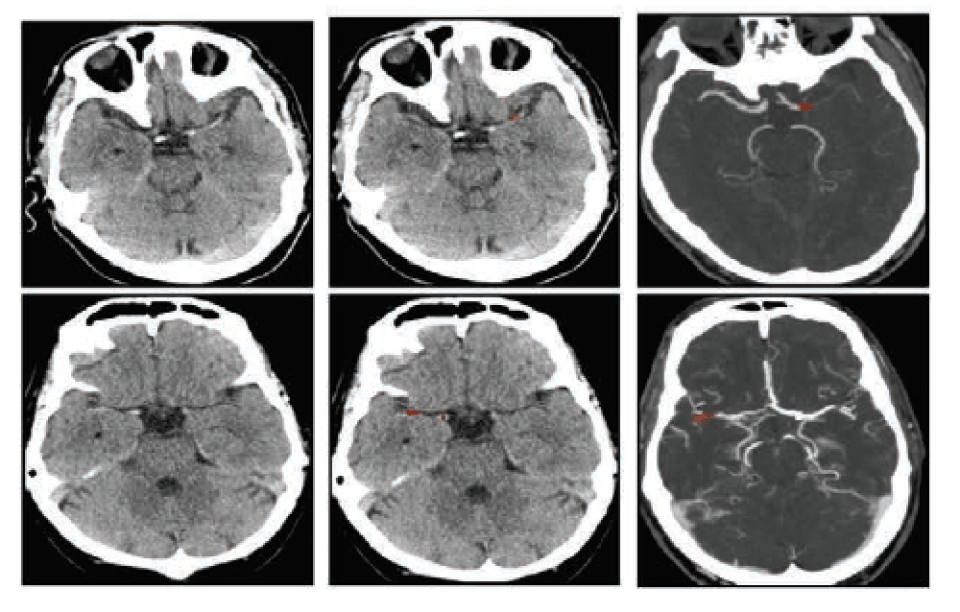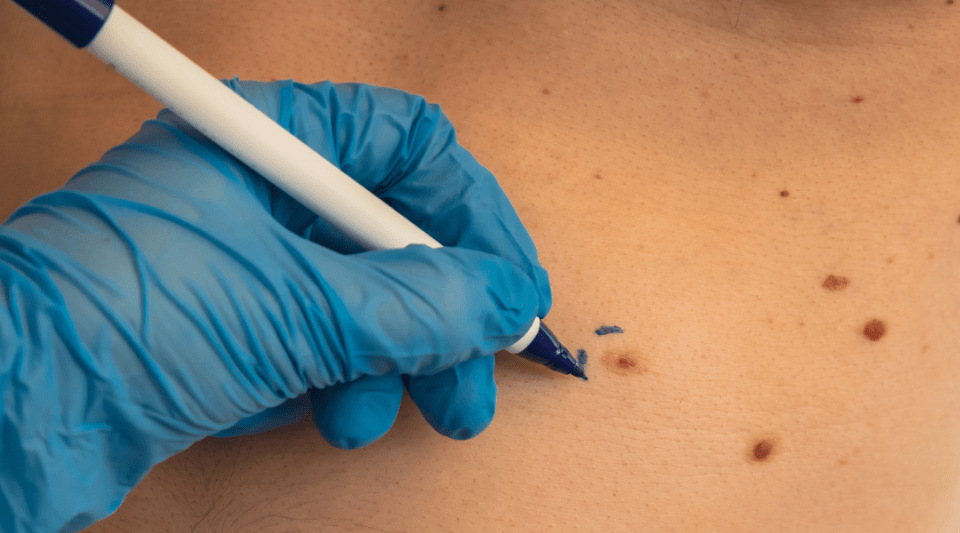A study carried out with the collaboration of Hospital Clínic, Vall d’Hebron and Germans Trias i Pujol, three centres specialising in ictus, along with the company Methinks, has evaluated the effectiveness of MethinksLVO software in improving diagnosis of patients with ictus.
Methinks is a company specialising in neuroimaging analysis using artificial intelligence techniques, and is behind the development of the MethinksLVO software evaluated in the study.
Doctors Juan Carlos Soler and Alexander Soler, Xabier Urra and Carlos Laredo from the Radiology Department and the Cerebrovascular Disease Unit at Hospital Clínic participated in this study with the team leaded by Dr Laura Oleaga. Their contribution consisted of confirming or excluding the existence of an occlusion in one of the main cerebral arteries in all patients, as well as contributing to the original idea and gathering images and clinical data.
The objective of the study was to determine whether this automatic learning algorithm could effectively identify occlusion in the cerebral vessels in the images obtained by non-contrast CT (computed tomography), and without specific examination of the vessels. The software was “trained” to interpret these images and classify them according to whether or not they presented arterial occlusion, which meant the decision to treat the patient to remove the clot, or to transfer them to another specialised centre, could be made much more quickly.
Of the 1,453 patients included in the study, 57% had an occlusion in a cerebral artery detected by CT and angiography. With the MethinksLVO software, 83% of patients with occlusion were detected, a rate higher than that detected with analysis of the image tests by neuroradiology experts. Furthermore, the results were improved by adding analysis of NIHSS parameters, which is the most common scale used for measuring the neurological deficits produced by ictus. This meant that the rate of false positives was reduced, which can prevent patients being transferred for unnecessary treatments.
The results showed that the MethinksLVO software can effectively detect an arterial occlusion in patients with suspected acute ischemic stroke. Furthermore, the processing time for the CT image is less than two minutes, and this software is able to work with non-contrast CT images, which is less invasive than the contrast CT used in these cases.
One of the main benefits offered by MethinksLVO is this rapid processing of images. The brain is the organ most sensitive to a lack of blood flow, and the sooner the ictus can be treated, the smaller the affected area will be. Taking action in the first few hours increases the chances of recovery, and decreases repercussions and mortality.
In case of suspected ictus, current guidelines recommend confirming the presence of the cerebral arterial occlusion with non-invasive imaging tests, such as CT, MRI or angiography. Furthermore, imaging should be interpreted by neuroradiology experts within no more than 10 minutes, according to recommendations from the Society of Neurointerventional Surgery. Nevertheless, smaller hospitals, or those that are less specialised in this disease, may find it difficult to adhere to these times, as expert professionals or diagnostic equipment may not always be available when the patient arrives at A&E.
If it is confirmed that the patient has an occlusion in the main cerebral vessels, they should be treated using an endovascular thrombectomy, a procedure used to remove the cerebrovascular thrombus. The effectiveness of endovascular thrombectomy in patients with ictus also deteriorates over time. Most small hospitals do not carry out this intervention, meaning that, once diagnosed, the patient must be transferred to another centre as soon as possible.
For all these reasons, arterial occlusions could be more quickly and reliably detected using the MethinksLVO software. It could help healthcare professionals to increase diagnostic efficiency, and to accelerate transfers of patients with ictus within the hospital network.
Source: Dr. Xabier Urra, Unitat Funcional de Patologia Vascular Cerebral, Institut Clínic Cardiovascular




